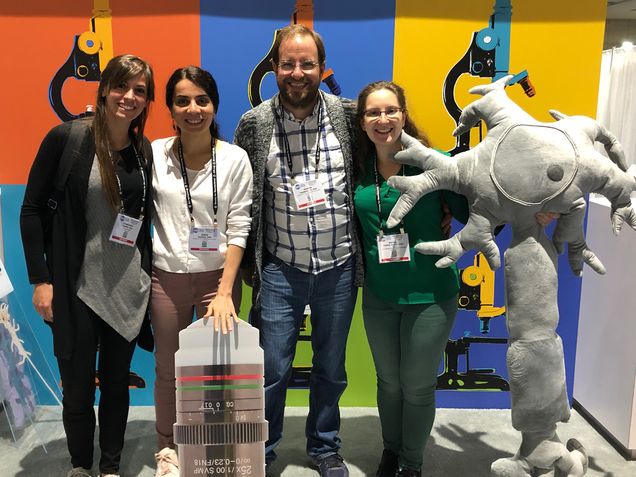Martin Thunemann Takes His Work Home with Him. He Wouldn’t Have It Any Other Way.
When Martin Thunemann was a kid, he had a chemistry toolkit in his parents’ basement. He would spend hours there in his subterranean lab, learning about acids and bases and exploring different types of reactions with child-size test tubes and beakers. Both of his parents were chemists themselves, but they never pushed him to follow in their footsteps. Surrounded by chemistry texts and books about medicine – and relishing the sense of discovery he associated with them – he gravitated toward the study of chemistry all on his own. “Science,” he says, “was kind of my hobby.”
Today, Thunemann, a Research Assistant Professor in the Neurophotonics Center at Boston University, can also claim science as a job. But that doesn’t mean he doesn’t still pursue it in his downtime. “When I go home, I don’t shut my brain off,” he says. “I just like to read nerdy science books.” Recently, he’s also been sharing his passion with his two-and-a-half-year-old daughter, building science-oriented Lego kits – “fancy starships and rockets they make in collaboration with NASA,” scale models of actual spacecraft with surprising levels of detail offering insight into how and why the spacecraft works.
Training the Next Generation of Researchers
As it happens, Thunemann also spends his days building complex tools representing the latest advances in science and helping others understand how and why the tools do what they do. An important part of his responsibilities is providing hands-on assistance to members of the team in setting up and running experiments.
The other team members comprise researchers from across the career spectrum, including students from the Boston University Department of Biomedical Engineering. Thunemann especially appreciates the opportunity to work with the youngest generation of researchers. “During my PhD back in Germany, we had a lot of students in the lab where I worked,” he says. “It’s enjoyable to have people around who are willing to learn, which is often the case with students. They’re curious and like what they are doing, so it’s fun to be able to explain to them how things work.”
And all of this is only part of his job. In addition to providing technical and scientific support to others, Thunemann is conducting research of his own. He describes one of the projects that has been keeping him busy of late. In recent years, in collaboration with Anna Devor and colleagues, Thunemann has been developing wearable, transparent electrode arrays that are enabling them to combine electrophysiological recordings and optical imaging in awake animals – yielding insights into brain activity during different types of behaviors that would not have been possible under anesthesia. But because the researchers can’t control for what goes through naturally behaving animals’ heads, the studies necessarily involve an added layer of complexity, motivating further development of measurement technologies.
Using new biosensors for neurotransmitters such as acetylcholine, Thunemann and colleagues in the Devor lab have been seeking better understandings of brain activity in awake animals naturally cycling through different “brain states.” These improved understandings will play an important role in advancing interpretation of noninvasive “resting state” fMRI methods that leverage spontaneous fluctuations in the level of arousal in resting humans to evaluate communication between different brain areas. These ongoing studies combining wearable electrode arrays with optical imaging of neurotransmitters also suggest new avenues of investigation. Thunemann points to a possible study of addiction as an example.
It’s exciting stuff. And yet, in a way, it’s simply business as usual in the lab. With his job, Thunemann says, every day is some new adventure.
